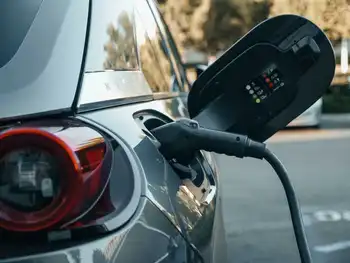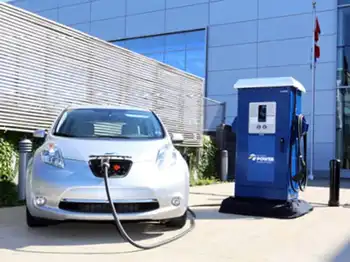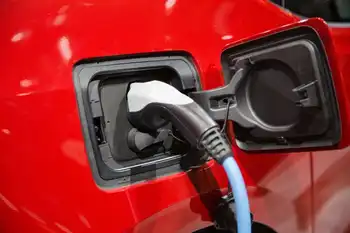US Crosses the Electric-Car Tipping Point for Mass Adoption

High Voltage Maintenance Training Online
Our customized live online or in‑person group training can be delivered to your staff at your location.

- Live Online
- 12 hours Instructor-led
- Group Training Available
EV Tipping Point signals the S-curve shift to mainstream adoption as new car sales pass 5%, with the US joining Europe and China; charging infrastructure, costs, and supply align to accelerate electric car market penetration.
Key Points
The EV tipping point is when fully electric cars reach about 5% of new sales, triggering rapid S-curve adoption.
✅ 5% of new car sales marks start of mass adoption
✅ Follows S-curve seen in phones, LEDs, internet
✅ Barriers ease: charging, cost declines, model availability
Many people of a certain age can recall the first time they held a smartphone. The devices were weird and expensive and novel enough to draw a crowd at parties. Then, less than a decade later, it became unusual not to own one.
That same society-altering shift is happening now with electric vehicles, according to a Bloomberg analysis of adoption rates around the world. The US is the latest country to pass what’s become a critical EV tipping point: an EV inflection point when 5% of new car sales are powered only by electricity. This threshold signals the start of mass EV adoption, the period when technological preferences rapidly flip, according to the analysis.
For the past six months, the US joined Europe and China — collectively the three largest car markets — in moving beyond the 5% tipping point, as recent U.S. EV sales indicate. If the US follows the trend established by 18 countries that came before it, a quarter of new car sales could be electric by the end of 2025. That would be a year or two ahead of most major forecasts.
How Fast Is the Switch to Electric Cars?
19 countries have reached the 5% tipping point, and an earlier-than-expected shift is underway—then everything changes
Why is 5% so important?
Most successful new technologies — electricity, televisions, mobile phones, the internet, even LED lightbulbs — follow an S-shaped adoption curve, with EVs going from zero to 2 million in five years according to market data. Sales move at a crawl in the early-adopter phase, then surprisingly quickly once things go mainstream. (The top of the S curve represents the last holdouts who refuse to give up their old flip phones.)
Electric cars inline tout
In the case of electric vehicles, 5% seems to be the point when early adopters are overtaken by mainstream demand. Before then, sales tend to be slow and unpredictable, and still behind gas cars in most markets. Afterward, rapidly accelerating demand ensues.
It makes sense that countries around the world would follow similar patterns of EV adoption. Most impediments are universal: there aren’t enough public chargers, grid capacity concerns linger, the cars are expensive and in limited supply, buyers don’t know much about them. Once the road has been paved for the first 5%, the masses soon follow.
Thus the adoption curve followed by South Korea starting in 2021 ends up looking a lot like the one taken by China in 2018, which is similar to Norway after its first 5% quarter in 2013. The next major car markets approaching the tipping point this year include Canada, Australia, and Spain, suggesting that within a decade many drivers could be in EVs worldwide.











